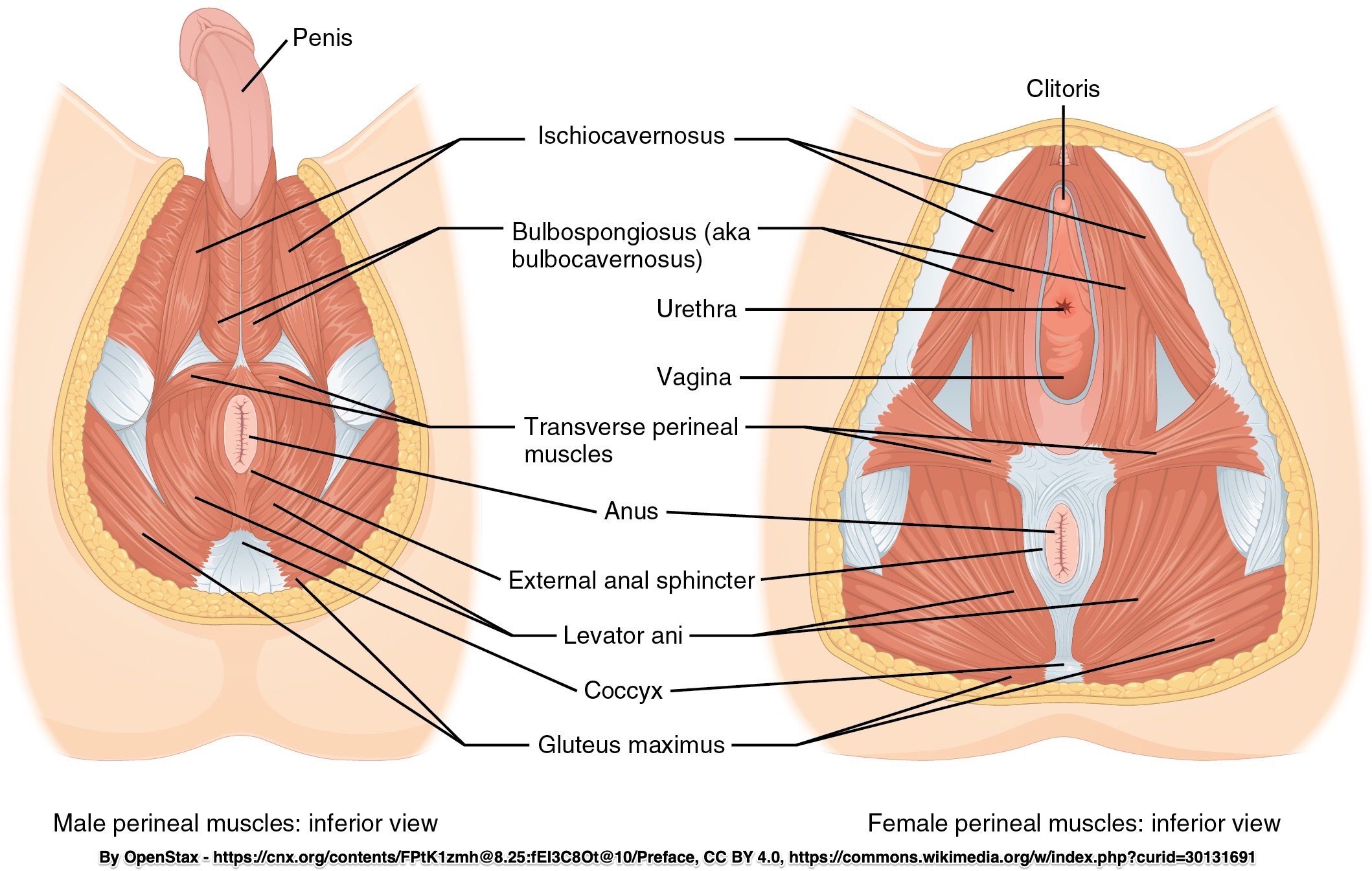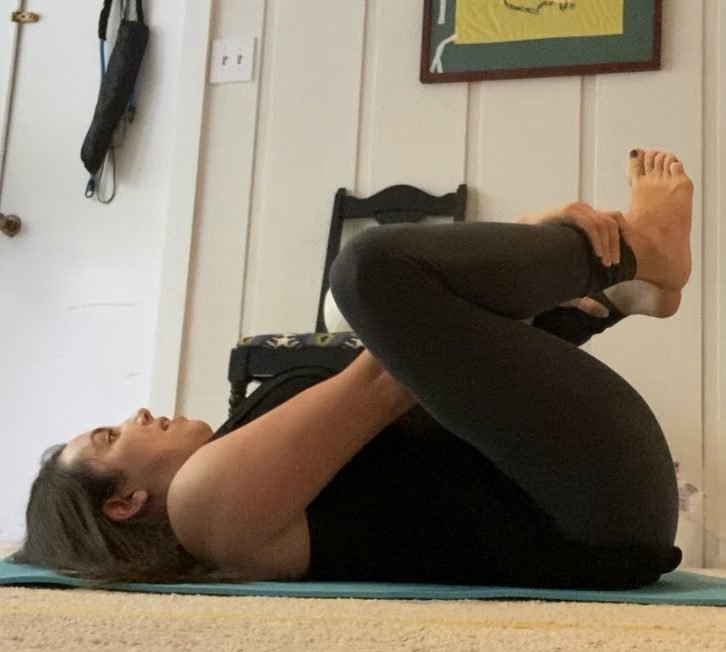How to Relax Your Pelvic Floor Muscles
Whenever I teach coursework to pelvic PTs, a common theme tends to come up. While teaching someone to contract their pelvic floor muscles can be challenging, teaching someone to relax and lengthen? So much harder! And teaching someone to actually bear down (the way you need to move your muscles to have a bowel movement)? Way way harder! So, I wanted to take some time today to talk about how to relax and lengthen your pelvic floor muscles. This is super helpful for anyone experiencing pelvic floor overactivity-- which often includes people with pelvic pain conditions, constipation, painful sex, and urinary urgency/frequency. And if you're a rehab professional, this post will also give you tips to help train your patients to lengthen.
As an aside, if you're a rehab professional and new to pelvic floor therapy, check out my facebook group, built just for you: Pelvic PT Newbies! This group was born after teaching so many new clinicians who just lack the support they need to grow into the incredible practitioners they can be! So, come join us! And, if you're a more seasoned clinician who loves supporting newbies, you are welcome as well!
Back to the topic at hand, how do you learn to relax and lengthen your pelvic floor muscles? Let's get started!
1. Locate and find your pelvic floor muscles
It's tough to let go of tension in a part of your body you don't really know. So, step one is locating these awesome muscles. The pelvic floor muscles are inside your pelvis like a hammock and run from your tailbone to your pubic bone. They support your organs, stabilize your pelvis and spine, control your sphincters, allow for sexual appreciation, and act as a sump pump to pump blood and lymphatic fluid in and out of your pelvis (Yep, those are the 5 S's we teach at H&W). They are also super important for breathing--coordinating with your respiratory diaphragm, and play a big role in postural stability and movement. So, locate those muscles in your mind, and see what you know. Can you use those muscles and contract as if you were holding back gas or cutting off a urine stream? If you aren't sure you're doing it, grab a mirror, and take a look at your perineum. Do you see the anus pull in (like it's winking) away from you and the perineal body (between the vulva/penis/scrotum and the anus) lift in? Or do you see the anus bulge out? If you have a vulva, you will also see a small amount of lift there and you will see the clitoris do a really tiny little nod of approval (that's because the pelvic floor muscles superficially attach to the hood over the clitoris). If you have a penis, you'll see the penis move as you contract.
Once you connect with your pelvic floor muscles, the opening and lengthening can begin.
2. Pelvic Floor "Drops" with Diaphragmatic Breathing
This is my standby, go-to, exercise for encouraging lengthening and opening of the pelvic floor muscles. To perform this exercise, bring your mind back to your pelvic floor muscles. Then, aim to let go of the muscles and lengthen, as if you are starting a urine stream. Note-- this does NOT mean bear down and push out. Urination actually should not require ANY pushing. This is simply opening, letting go, and lengthening. Another tip to help visualize this is to think about a straw in one of your orifices, then imagine that straw is in a cup of water, and you're trying to gently blow bubbles in the water (believe me, I'm full of weird visual analogies!) After you drop and lengthen your muscles, let's do slow, diaphragmatic breathing. Breathing well means allowing your chest, ribcage, and belly to expand as you inhale-- Yes, this is NOT just belly breathing! Belly breathing really does not harness the diaphragm the same way! So, perform slow breathing inhaling, allowing your ribs to open, chest to lift, belly to expand AND pelvic floor muscles to open, then exhale gently. Repeat this slow breathing for 2-3 breaths. Then, check in with your pelvic floor muscles, drop them again, and repeat! If it is challenging to know if your muscles are opening or not, you can perform a very small (like 10-20%) activation of the pelvic floor muscles before letting them lengthen and open. That being said, if you have significant overactivity, even a small contraction can irritate the muscles-- so pay attention to what you feel!
3. The Elevator Let-Go
This is another visualization that can sometimes help you leg go all of the way of your pelvic floor muscles. To do this, visualize an elevator sitting in your pelvis. This is your main floor, and your building has 10 floors, and a basement. Now, use your muscles to gently lift that elevator to the first floor. Then, drop the elevator to the main floor. Take a deep breath while you visualize the elevator dropping all the way to the basement. Keep the elevator there while you gently take 2-3 breaths. NOTE: This also should not require much effort-- we're aiming to gently relax and lengthen.
4. Happy Baby Breathing
This is one of my favorite positions to encourage lengthening of the pelvic floor muscles. For this exercise, you'll lie on your back and bring your knees up toward your chest, then open your knees and reach through to grab your ankles or your toes (whatever is comfortable and allows you to relax). In this position, take deep long breaths, focusing your breath into your abdomen and pelvis.
Hopefully this helps you get started! Believe me, lengthening the pelvic floor muscles can be challenging, so try not to get too frustrated if you find this difficult at first! If you're struggling, reach out to a pelvic PT. We're happy to help you figure this out, and have more tools available if these ones don't resonate with you!


